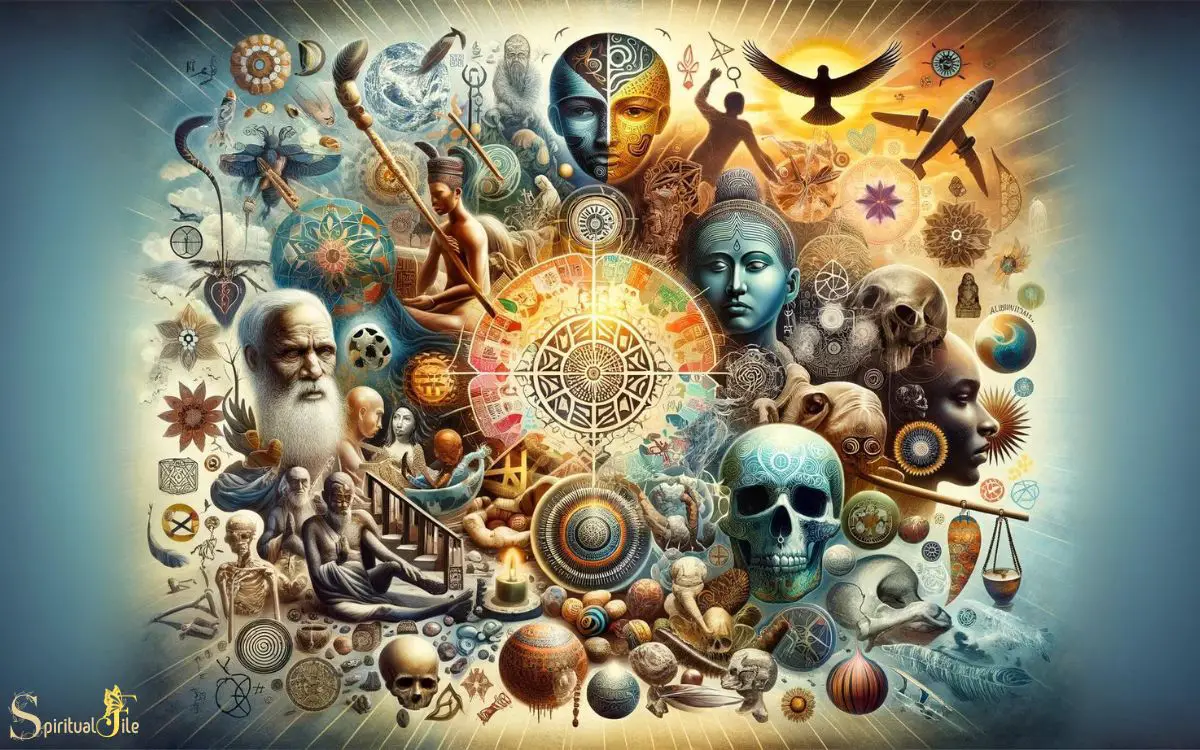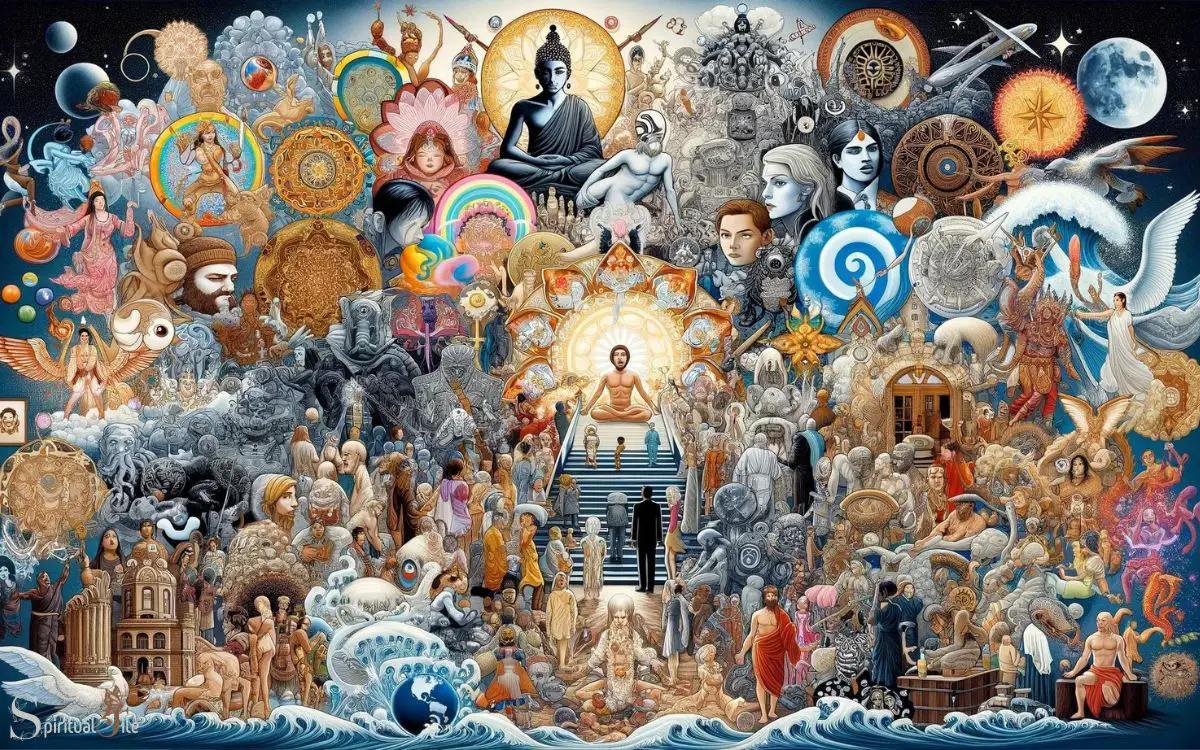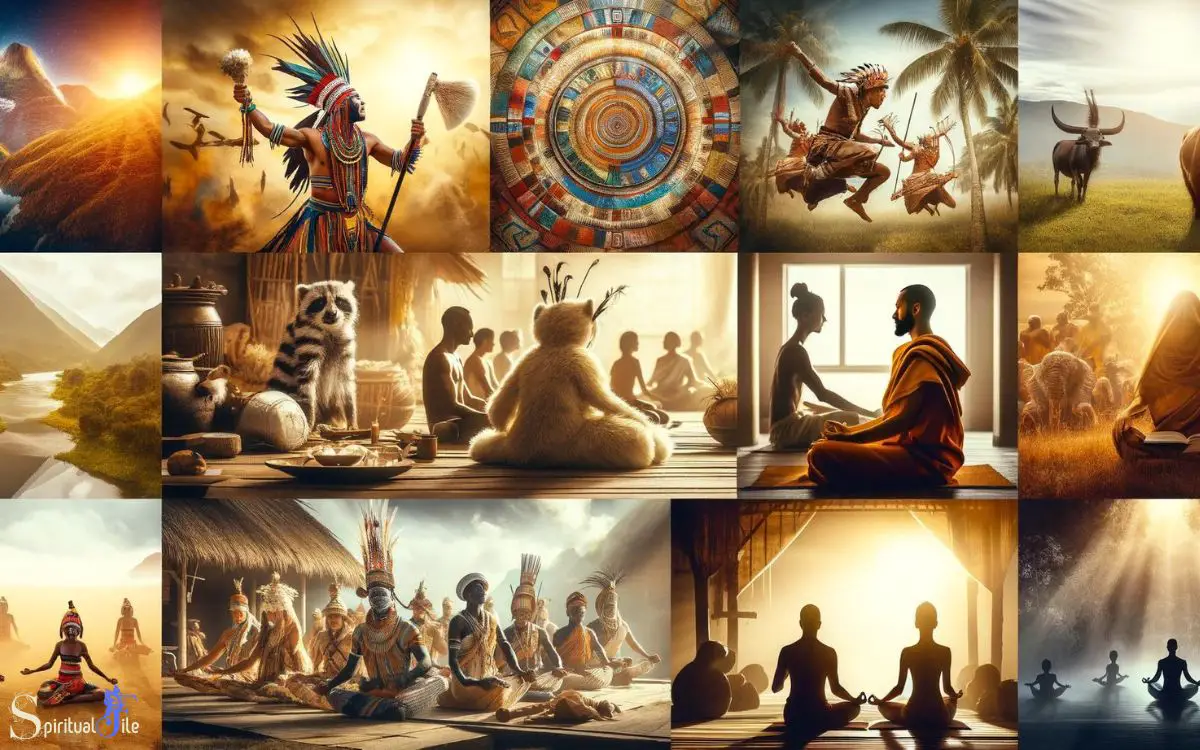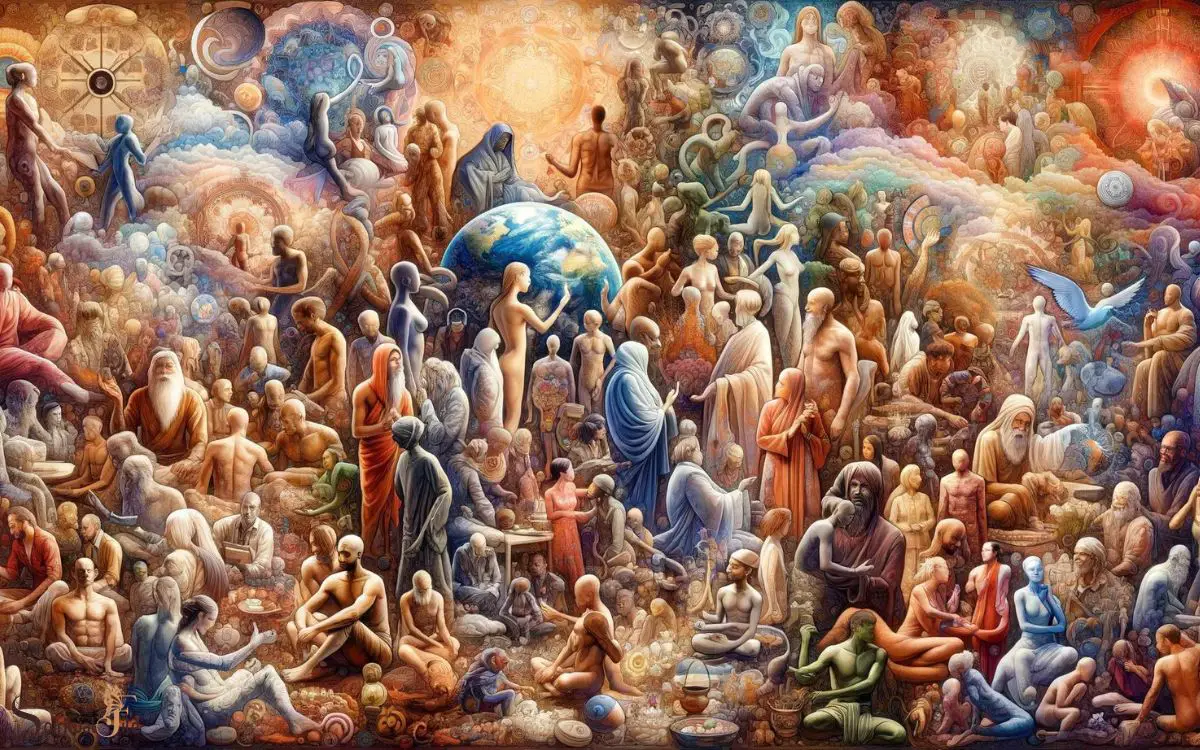Religion and Spirituality Are the Same Thing to Anthropologists
In the field of anthropology, religion and spirituality are often viewed as interconnected aspects of human culture, rather than separate entities.
Anthropologists study these elements to gain insights into human belief systems and their impacts on societal structures and individual behaviors.
Anthropologists regard religion and spirituality as overlapping domains that both contribute to a society’s cultural fabric.
Religion typically refers to organized systems of beliefs and practices often involving a higher power or deity. Spirituality, on the other hand, is more about individual experiences and personal quests for meaning.
Despite their differences, both are crucial for a comprehensive understanding of cultural expressions of the sacred:
Investigating both religion and spirituality provides a holistic view of how humans find meaning and connection in their lives.

Key Takeaway
Anthropological Definitions of Religion and Spirituality

As an anthropologist, my understanding of religion and spirituality revolves around the study of human beliefs and practices concerning the sacred or divine.
In anthropology, religion is viewed as a system of symbols and rituals that serve to give meaning to the ultimate concerns of human existence.
It is not limited to organized institutions or formalized doctrines but encompasses the wide range of beliefs and practices found in different cultures.
Spirituality, on the other hand, is often seen as a more personal and individual connection to the sacred or transcendent. It can include experiences of awe, reverence, and a sense of interconnectedness with the universe.
Both religion and spirituality are essential aspects of human culture, shaping individuals and societies in profound ways.
Understanding these anthropological perspectives on religion and spirituality provides valuable insights into the diverse cultural perspectives on belief systems.
Cultural Perspectives on Belief Systems

My understanding of cultural perspectives on belief systems stems from the diverse range of symbols and rituals that shape human beliefs and practices regarding the sacred or divine.
These cultural perspectives vary widely across different societies and can profoundly influence individuals’ worldviews and behaviors.
| Cultural Perspective | Description |
|---|---|
| Animism | Belief that objects, places, and creatures all possess a distinct spiritual essence. |
| Pantheism | The divine is present in everything, and everything is divine. |
| Monotheism | Belief in a single, all-powerful deity. |
Understanding these cultural perspectives helps us appreciate the rich tapestry of human belief systems, fostering empathy and respect for diverse ways of understanding the sacred.
Rituals and Practices Across Cultures
In my research, I have observed that rituals and practices across cultures exhibit remarkable diversity and complexity.
This diversity reflects the unique ways in which different societies express their beliefs and values.

Through my studies, I’ve come to understand that:
- Rituals often serve as a means of connecting individuals to their cultural heritage and ancestors.
- Practices related to birth, coming of age, marriage, and death vary widely across cultures, showcasing the significance of these life events.
- Many cultures incorporate music, dance, and art into their rituals, highlighting the importance of creativity and expression in spiritual practices.
- The use of sacred spaces, such as temples, churches, or natural landmarks, underscores the universal human need for a tangible connection to the divine.
Understanding these diverse rituals and practices enriches our appreciation for the depth of human spirituality across the globe.
Interconnectedness of Religious and Spiritual Beliefs

From my research, I have observed that the interconnectedness of religious and spiritual beliefs is evident in the diverse rituals and practices across cultures, highlighting the universal human quest for connection to the divine.
While religious beliefs often involve organized institutions and specific doctrines, spiritual beliefs are more personal and individualistic.
However, both religious and spiritual beliefs share common themes such as the existence of a higher power, moral codes for living, and the desire for transcendence.
This interconnectedness is further emphasized by the fact that many religious traditions incorporate spiritual practices, and individuals often draw on both religious and spiritual beliefs to find meaning and purpose in life.
Understanding this interconnectedness can foster greater respect and appreciation for the diverse ways in which individuals seek connection to the divine.
Are Religion and Spirituality Considered the Same Thing in Anthropology?
In anthropology, the spiritualism versus spirituality differentiation is crucial. While spirituality encompasses personal connection and inner peace, religious practices often involve organized belief systems and rituals. Religion tends to be more formalized, while spirituality is seen as more individualistic and open to interpretation in anthropological studies.
Implications for Understanding Human Diversity
After conducting extensive research, I have noticed that the interconnectedness of religious and spiritual beliefs has profound implications for understanding human diversity.
This deeper understanding can help us appreciate the complexities and nuances of different cultures and societies.

Here are a few key implications to consider:
- Cultural Perspectives: Recognizing the intertwined nature of religion and spirituality allows us to better appreciate the diverse cultural perspectives that shape human beliefs and practices.
- Social Cohesion: Understanding the similarities in the core values of various religious and spiritual traditions can foster greater social cohesion and empathy across different communities.
- Individual Identity: Recognizing the interconnectedness of religious and spiritual beliefs helps us appreciate the diverse ways individuals construct their identities within a cultural context.
- Conflict Resolution: Acknowledging the similarities in fundamental beliefs across diverse religious and spiritual traditions can potentially aid in mitigating conflicts and promoting understanding.
Conclusion
In the world of anthropology, religion and spirituality dance together like two partners in a cosmic ballroom.
Their intertwined movements reveal the diversity and interconnectedness of human belief systems. From rituals to cultural perspectives, the threads of faith weave a rich tapestry of understanding.
As anthropologists, we must embrace the harmonious rhythm of these two forces to truly appreciate the depth of human spirituality and the complex web of religious expression across cultures.






